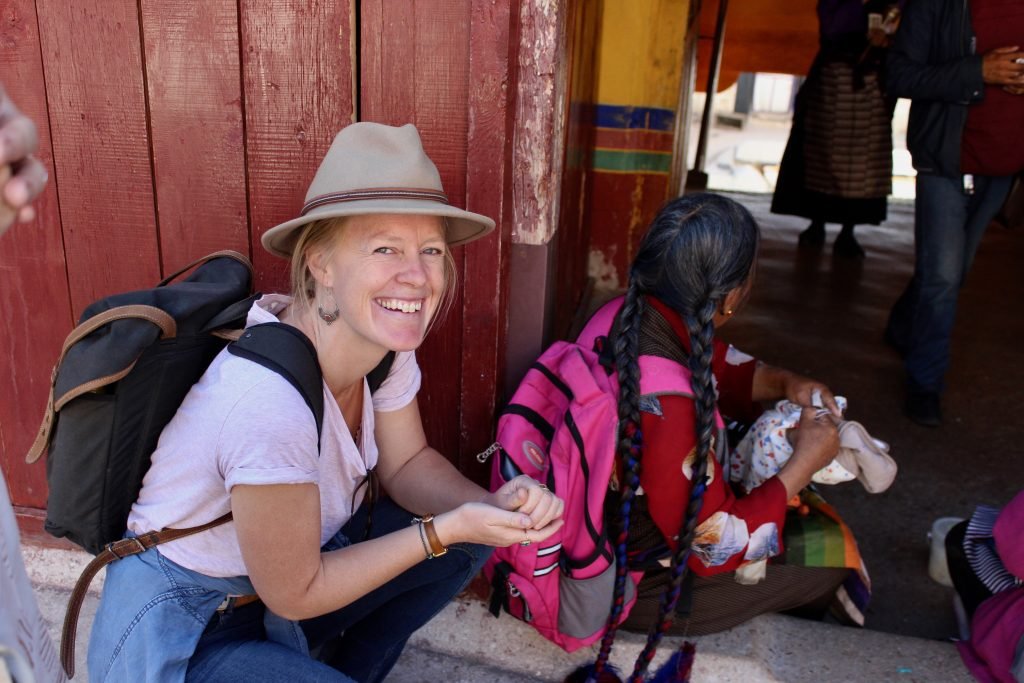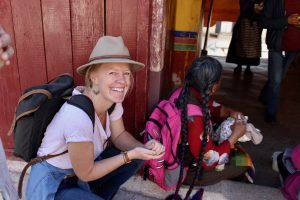- HOME
- JOURNEYS

EXPERIENCES:
HIKING
YOGA
PILGRIMAGE
SAFARI
MEDITATION
TYPES:
DESTINATIONS:
TIBET
BHUTAN
NEPAL
DATES:
2022
2023
All
- C-19
- BOOK
- STORE
KATHMANDU VALLEY WEEKEND RETREAT
3 DAYS
FROM $390
Activity Level
Moderate
Travelers should be physically fit and mentally prepared for multiple hours (2-4) of activity hiking almost daily.
Service Level
Ultimate Journeys
Ultimate Journeys feature a fully immersive itinerary with a particular theme. Great distances are covered using only the best vehicles available. These itineraries are carefully designed to be comprised of daily sessions of meditation and philosophy, an intimate introduction to the rich Himalayan culture, exclusive access to remote & sacred sites, and visits/talks with local specialists & experts. All-inclusive services include: travel by the highest quality land transportation vehicles and/or plane, knowledgeable local guides, porters, first-class accommodation, healthy & delicious meals, and experienced & dynamic Himalayan Hermitage facilitators as well as local specialists & experts.
Group Size
Max 10
The retreat in a nutshell
- Discover the beauty and the sacredness of Namo Buddha, located in the eastern part of the Kathmandu valley
- 3-day itinerary incorporating daily yoga & meditation sessions, as well as group discussions on Buddhist philosophy. Includes all meals, accommodation, & transportation
- Hikes to sacred sites in the area, including the Namo Buddha Stupa and Thrangu Rinpoche’s monastery
- We stay in a beautifully located eco-resort
- Healthy & delicious vegetarian meals. Organic veggies from own garden. Please inquire about dietary needs
- Price of $390 USD per person
Facilitators
A Himalayan Hermitage facilitator will lead this retreat alongside a yoga teacher.

Alex d’Artois
Co-Founder & Facilitator

Sisse d’Artois
Co-Founder, Facilitator & Photographer
Itinerary
Day 2: Pilgrimage in Namo Buddha
Accommodation
We will be staying at a beautifully located eco-resort 1,5 hours outside of Kathmandu in the area of Namo Buddha.
This beautifully located eco resort is nestled in Namo Buddha, eastern corner of the Kathmandu Valley.
Covid-19 Travel Protocol
As we prepare to welcome back travellers onto our journeys throughout the Himalayas, please review our new Covid-19 Travel Protocol carefully before your departure to help us ensure safety for all travellers.
Pricing & What Is Included
Pricing
- The Price is $390
- The Single Room Supplement is an added $100*
* Please note that in the event that there is no other solo traveller of the same gender with whom to share a double room, participants will be liable to cover 50% of the single room.
What is included
- 3 days & 2 nights
- Airport/meeting point pick-up & drop-off
- All accommodation as per itinerary
- All healthy vegetarian meals (vegan possible too)
- Daily Buddhist philosophy discussions, yoga, & meditation sessions
- Notebook for journaling during the journey
What is not included
- Alcoholic beverages during the retreat
Dates
2022
Sisse d’Artois
More info
Emily Polar
More info
Sisse d’Artois
More info
2023
Alex d’Artois
Nathalie Royer
More info
Alex d’Artois
More info
More info
Yoga, Meditation, and Buddhist Philosophy
Throughout the retreat, we will practice yoga and meditation together as a group, as well as have discussions on Buddhist philosophy. There is no prerequisite for joining, nor is it required to have any knowledge or experience with yoga, the practice of meditation, or of Buddhism. Simply to have the wish to go deeper with one’s mind, and to have curiosity regarding its qualities, is enough!
Yoga:
Here we are referring to group asana practice which will be led daily by a qualified and well experienced yoga teacher. Most sessions will be done in the morning before breakfast, and if the group wants, we may do some winding down sessions before turning in for the night.
Meditation:
There is nothing religious about the practice of meditation or in visiting sacred places. In fact, there is nothing even Buddhist about it! The idea of pilgrimage here, means that while we are exploring sacred sites, we are also investigating ourselves with a ‘tried, tested, and true’ introspective process called meditation. The practice of meditation is simply a tool to bring your mind back to a place of naked awareness, to a place of basic space with yourself and environment.
It is simply a technique with which to uncover all the layers of hope, fear, grasping, and judgement that are all such strong habits which cloud the mind. With the practice of meditation, we can learn to come back to ourselves, to become familiar with the groundless, unfabricated, and raw quality of reality. The daily schedule in this itinerary comprises of meditating together every morning and evening – this may be for 20-60 minutes (several sessions of sitting and walking meditation) depending on what the group wants and where we are in our itinerary. We will not meditate for longer than 15-20 minutes in a single sit and making adjustments so that you are comfortable is encouraged.
Buddhist Philosophy:
Buddhist philosophy sessions are roughly 1-hour per day, combining a short presentation with group discussion.
Throughout the journey we slowly walk through all 3 yanas (vehicles) of the Tibetan Buddhist path. We explore how & why shamatha/mindfulness (one-pointed calm-abiding meditation) + vipassana (insight) are used as tools from the beginning through to the end of the path. The foundational path of the Shravakayana is comprised of: The 4 Turnings of the Mind, Refuge, The 3 Marks of Existence, and The Four Noble Truths. There is an emphasis on exploring the middle yana – the Mahayana (the great vehicle of the Bodhisattvas) which entails: Bodhicitta (awakened heart/mind), The 6 Paramitas (perfect actions), Shunyayta (emptiness), and Lojong (mind-training).
We explore Lojong slogans as brought forth in an accessible way by great Tibetan/Western hybrid teachers Chogyam Trungpa Rinpoche and Pema Chodron. We touch upon the final yana, the Vajrayana of Tibetan Buddhism, by exploring its many expressions and intricate symbolism. At face value Tibetan Buddhism may look esoteric, but with investigation we may see first-hand how it is simply a system for training one’s mind by utilizing various methods which combine mindfulness, compassion, and wisdom cultivation practices.
Daily Schedule
We start the day with yoga by exploring the inner experience of awakening in ourselves while we ground our awareness into the body. In the afternoon we becoming pilgrims by exploring the outer element of sacredness, visiting, and paying homage to the many sacred sites in the Kathmandu valley such as; temples, shrines, monasteries, and caves. Evening meditation after dinner.
- 7:45 – 9:00 Yoga
- 9:00 – 10:00 Breakfast
- 10:30 – 12:00 Morning session on Tibetan Buddhism & Meditation Practice
- 1:00 – 2:00 Lunch
- 2:00 – 3:30 Free time
- 3:30 – 5:30 Visiting sacred places
- 7:00 – 8:00 Dinner
- 8:15 – 8:45 Evening meditation
Inspirational Reading
JOIN THE COMMUNITY
DISCOVER
-
Book
- Travel Blog
-
Why Travel with Us
-
Testimonials

